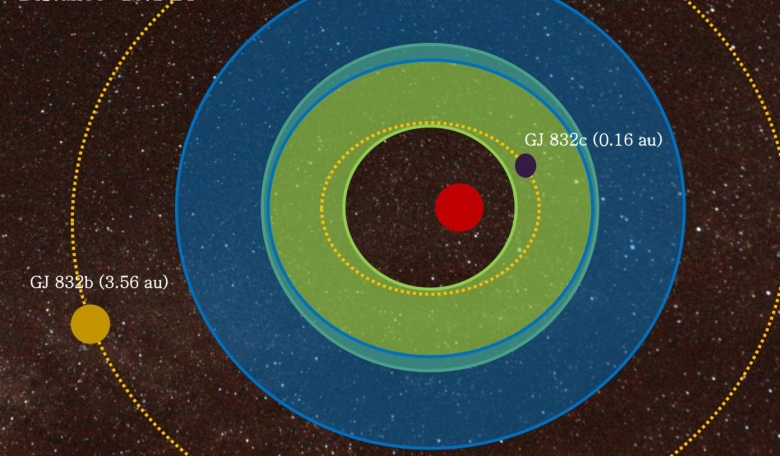A team at the University of Texas in Arlington has been investigating the star system Gliese 832 in hopes of finding new exoplanets in addition to the two already known to exist in the system. They have discovered that an Earth-like planet may be located at a distance of 0.25 to 2.0 astronomical units from the system's star.
Gliese 832 is a red dwarf slightly less than half the mass an radius of our sun. Two exoplanets are known to orbit the dwarf – the gas giant Gliese 832b and the so-called super-Earth Gliese 832c. The Jupiter-like giant is orbiting the star at a distance of 3.53 astronomical units, while the other planet is a potentially rocky one, about five times more massive than the Earth, and very close to its star – about 0.16 AU. In this new study, the team analyzed the simulated data with an injected Earth-mass planet on this nearby planetary system hoping to find a stable orbital configuration for the planet that may be located in a vast space between the two known planets.
The team's findings were published this week in The Astrophysical Journal. "According to our calculations, this hypothetical alien world would probably have a mass between 1 to 15 Earth's masses," said the lead author Suman Satyal, UTA physics researcher, lecturer and laboratory supervisor. The paper is co-authored by John Griffith, UTA undergraduate student and long-time UTA physics professor Zdzislaw Musielak.
The first two exoplanets of this system were discovered using the radial velocity technique. The technique examines variations in the velocity of the central star in relation to the changing direction of the gravitational pull from an orbiting exoplanet. Thus, regular analysis of the star's spectrum can show if it periodically moves due to another celestial body's influence.
"We also used the integrated data from the time evolution of orbital parameters to generate the synthetic radial velocity curves of the known and the Earth-like planets in the system," said Satyal. "We obtained several radial velocity curves for varying masses and distances indicating a possible new middle planet. The existence of this possible planet is supported by long-term orbital stability of the system, orbital dynamics and the synthetic radial velocity signal analysis", he noted. "At the same time, a significantly large number of radial velocity observations, transit method studies, as well as direct imaging are still needed to confirm the presence of possible new planets in the Gliese 832 system."











